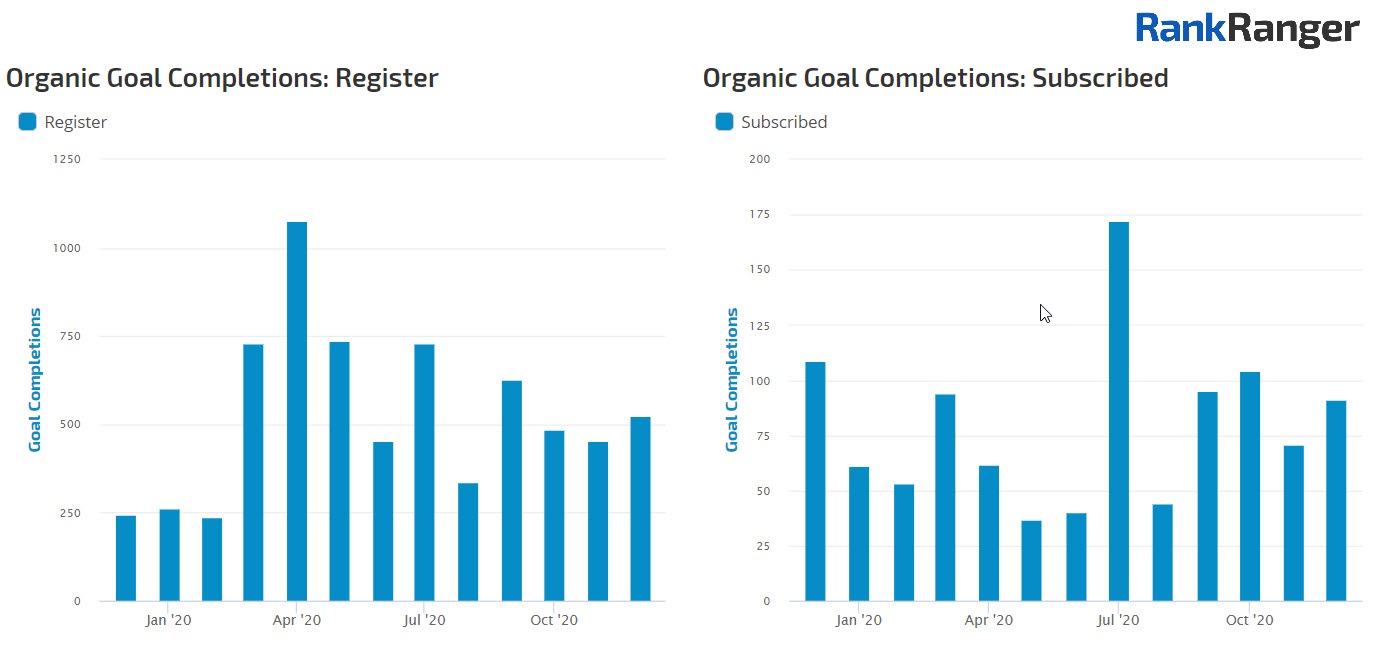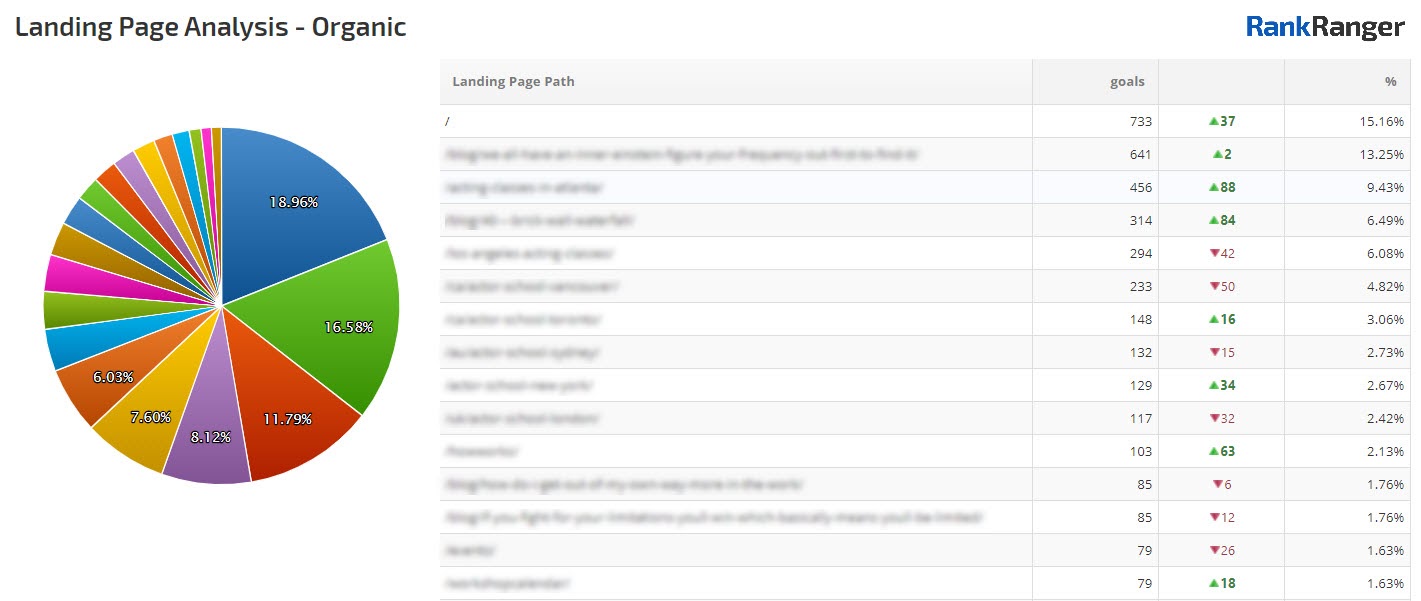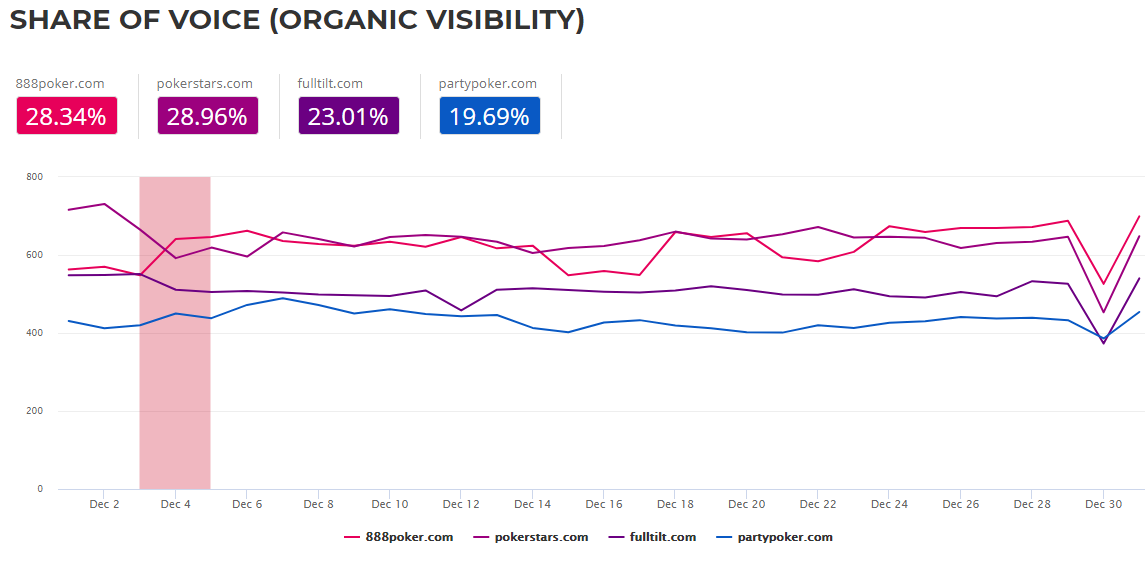How to Create an SEO Dashboard

As an SEO, it’s crucial to understand how your campaigns are bringing your site sales.
To understand this, you must set up reporting dashboards that not only show how your site is performing but also help you to create a strategy to improve your sales moving forward.
Looking at the right metrics is crucial. All too often business owners focus on one metric and blow it out of proportion only to ignore the most important ones.
The question is…
What metrics should you track?
Start with general sales data, and then work your way into more specific data. This structure will give you solid foundations for understanding your overall SEO sales strategy.
To help you do this, I’ll show you how to create an SEO dashboard using Similarweb. If however, you don’t have a Similarweb account you can still set this up using Google Analytics and Google Search Console data.
Before getting into the actual data, I first need to explain why I’m using a marketing dashboard platform rather than taking screenshots from Google Analytics.
SEO Marketing Dashboards
When looking at an entire campaign marketers run into a problem. Usually, our campaigns are complex, requiring us to look at multiple platforms to get a clear picture of our successes and failures.
This leads to confusion as it’s difficult to know which platform to look at first or which metrics are the most important. In order to deal with this, marketers have to spend hours each month compiling reports that show the data in a linear fashion.
This usually consists of taking screenshots of the most important metrics and pasting them in platforms such as Google Docs, Excel, Google Slides, etc.
A marketing dashboard is the simplest way to see all of your essential data on one page so that you don’t need to dig through different platforms trying to find the data you need. This means no more clumsy screenshots.
Also, once you have a dashboard set up, you don’t have to set it up again before your next meeting. The dashboard will always give you the most current data. This means you don’t need to waste hours creating reports.
With that out of the way, let’s start to build a dashboard that takes you through your campaign from top to bottom so that you not only understand it but also understand what action steps you need to take to improve your numbers.
==> Check out our detailed guide to creating SEO reports for clients
Top-Level Site Metrics
As an SEO, you might be tempted to jump into your rankings.
This is a mistake.
Since an SEO campaign is generally designed to bring in sales or leads, you should first understand your sales numbers. Once you have this clear, you can look at your rankings to help you understand why your sales numbers are the way they are.
In order to successfully do this, you should first add your Google Analytics goals to your marketing analytics dashboard…
Track Your Goals
For this to work, you must have your Google Analytics account integrated into your Similarweb account.
The first place to look is to see your overall goal completions or e-commerce conversions. This will help you see how your site is performing. In other words, how many transactions did your site have?
In order to add context to your goal completions, you can also present other metrics such as revenue and conversion rate.
Having these other metrics will help clarify how well your site is performing.
For instance, if you look at your goal completions together with your revenue, you can easily figure out an average order value (AOV). To do this, divide the total revenue by the number of transactions.
Also, seeing your conversion rate together with revenue will help you understand how much you could increase your revenue if you’re able to increase your conversion rates.
It’s important to note, I’m suggesting a few general metrics. What specific data you include is really dependent on your specific business. My point here is to have general sales metrics at the top of your report.
Once you have a 30,000-foot view of your sales and revenue, you should also look at how your site reached its goals over time.
Goal Completions Over Time
Seeing this data will help you to understand how you are getting conversions. For instance, in the screenshot above, the site had a sudden increase in subscribers in July 2020. Does this correlate with an event? Did they run an ad or promotion that month? Did they have a spike in website traffic that month?
By figuring this out, you might be able to build that into your overall marketing strategy.
For instance…
If the spike in conversions is related to a promotion, it might make sense to run more promotions. If on the other hand, if the spike in conversions was due to a traffic increase, you should focus your efforts on increasing traffic.
Once you have a clear understanding of how much revenue your SEO is generating and how your goal completions developed over time, you should now see which pages your conversions are coming from.
Google Analytics Chart / List Widget
The Google Analytics Chart / List Widget can be set to show which landing pages are bringing you goal completions.
This chart requires you to have Google Analytics integrated with your Similarweb account. If you don’t have marketing dashboard software and you’re creating your report the old-fashioned way (with digital scissors and virtual glue), you can find this data in Google Analytics by going to Behavior > Site Content > All Pages.
To set the Chart / List report up you will need to set the dimension to Landing Page Path, the display to All Goals, and the segment to Organic Traffic.
Once this is set up, you can easily see which pages are bringing in conversions. This is valuable data that could potentially help you increase your conversions month over month.
Once you know which pages are bringing in the most conversions, you should try to figure out why.
Here are some common reasons:
- The pages are middle to bottom of the funnel content that naturally lead to conversions.
- The page’s structure results in easy-to-see CTAs that make sense in the context of the content.
- The pages are receiving large amounts of traffic.
Once you figure out what’s causing your conversions, you can build those insights into your marketing strategy.
For instance, if the reason these pages are converting well is that they get a lot of traffic, your go-to strategy might be to try to increase your traffic. If, on the other hand, the pages convert well because they feature bottom of the funnel content, you should try to get more bottom of the funnel content to rank in Google.
Top Level Metrics – Key Takeaways…
When looking at your business big picture, you are looking to understand:
- How your site is performing financially
- What metrics you want to improve to see an improvement in your numbers
- Where your successes and failures are coming from
With this information, you should be able to define your goals moving forward.
Now, it’s important to note, I’ve not included specific metrics such as which locations your sales are coming from and from which search engines. The reason for this is these metrics are not relevant to every site. However, if they are relevant to your site, you should include them in the report.
Once you understand which pages are bringing in your goal completions, you can now look at ranking data.
Rank Tracking Data
Once you’re clear which pages are bringing in your most conversions, you should have an idea what type of content is bringing in your most revenue. As I mentioned above, this will inform your strategy moving forward.
However, even if you decide your go-to strategy is not focused on increasing your traffic, it always pays to understand how your pages are ranking in Google. Who knows, you might find some low-hanging traffic wins that you can capitalize on.
Share of Voice
Before going into granular ranking data, you should first see how your site fares against your competitors. This will help you understand your site’s organic market share, how much your site can grow, and how much traffic potential you have.
To see this, you should set up the Share of Voice report. This report will show you at a glance how your site’s visibility stacks against your competitors’ sites.
Getting this clear will help you understand how your site is performing in your niche as a whole. If it’s underperforming, you should build out a strategy for capturing more market share by analyzing your competitor’s rankings.
Once you have an idea of what your organic market share is, you should include your page rankings in your report.
Rank Tracking Dashboard
To get a good picture of how your pages are ranking in Google, you can add the Rank Tracking Dashboard. This report will show you:
- Landing page
- SERP features
- Keywords
- Rank
You can use this report to figure out what strategy to focus on to improve your traffic. For instance, if your pages are ranking below page one, your main goal is to get your page on to page one.
If on the other hand, your page is at the top of the SERPs you might want to increase your Click Through Rates by increasing your visibility. This can be achieved by focusing on SERP features.
In order to truly understand your visibility, try adding the Similarweb Absolute Visibility report…
Absolute Visibility
This report will show you what your site’s visibility really is. The report will take into account all the SERPs that your pages are ranking on and will give your site a visibility score taking into account its above / below the fold status weighted against SERP features that are vying for attention.
What this means is if your pages are below the fold they are significantly less visible than pages that are above the fold. Also, pages that appear near SERP features, like video carousels or PAA boxes will appear to be less visible than pages that appear on SERPs without SERP features. This report takes all of this into account.
This will give you a clear picture of how to improve your visibility. In other words:
- Should you go after SERP features?
- Which ones?
- Should you increase your rankings, ensuring your URL is above the fold?
This information will help you understand what to focus on in order to improve your site’s visibility and therefore to increase organic traffic.
Now that you have a good understanding of how to improve your site, you might want to add more granular data to build out your ranking strategy.
Rank Strategy Data
When looking to create a strategy to rank higher on Google and to increase the visibility of your page, you need data that will show you how to move forward. In other words, you know what you need to achieve, you now need data to help you achieve it.
In order to improve your rankings, the first place to look is Google Search Console data.
Landing Page Traffic insights
If you want a big picture strategic look at your top pages, try including the Landing Page Traffic Insights in your dashboard. This report presents both Google Analytics and Google Search Console data on one page.
This way you can quickly see how your higher-performing content is performing on the SERPs.
In other words, you don’t only see how many Page Views your content is getting, you can also see:
- Clicks
- Impressions
- Average Click Through Rate
- Average Position
This data will help you improve traffic metrics. For instance, if you see your URL is getting almost no clicks in spite of being at the top of a SERP that gets a high search volume, you can try to increase your click through rates.
You can do this by testing different title tags and meta descriptions. Another option is to try to win SERP features as I mentioned above.
With all of these data points, you should have a good idea of which metrics you need to improve as well as a general idea as to how to improve them. This is the goal of your reporting dashboard.
Your Marketing Dashboard
In this post, I’ve suggested how to build a marketing dashboard up starting with revenue and goals and moving onto rankings later. Structuring your reports this way will give you a top-down view of your business which will enable you to make informed strategic decisions by keeping you focused on your sales and leads.
With your dashboard set up in this way, you now have a fairly good idea:
- How much revenue your site is bringing in
- Which pages are bringing in the most revenue and why
- How your site is ranking on Google
- Whether you should improve your rankings and visibility
Hopefully by now, you can see that all of this data structured in this way will give you a clear direction so that you can take your business to the next level. The last thing is to take action.
The #1 keyword research tool
Give it a try or talk to our marketing team — don’t worry, it’s free!













